You may have seen beautiful pine furniture or homes made from strong pine wood and wondered what is pine wood used for other than building furniture and homes? Are there other uses for this strong wood? Let’s discover the uses of pine lumber and the many pine species in this comprehensive guide.
What is Pine Wood?
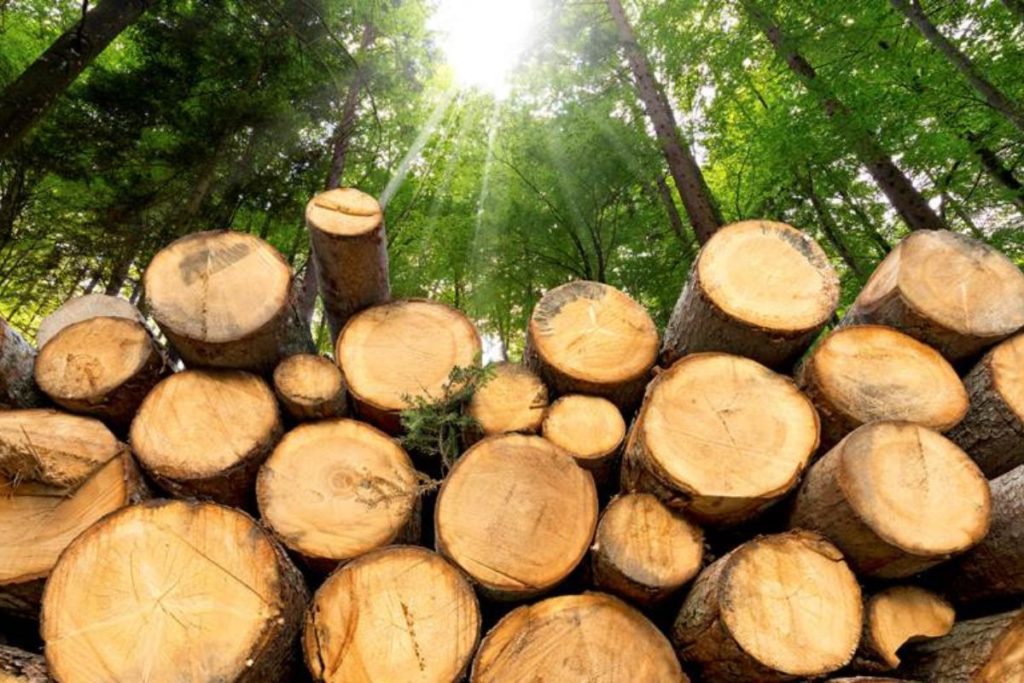
Pine tree is a conifer tree that belongs to the genus Pinus, family Pinaceae. According to the Plant List from the Royal Botanic Gardens, Kew, and the Missouri Botanical garden, there are 126 species of pine. Each of these species has unique characteristics, appearance, and strengths. We will discuss these species a bit later. Meanwhile, the American Conifer Society, or ACS and the Royal Horticultural Society have documented 121 species of pine trees.
Pine trees grow in the Northern Hemisphere. It is the most prominent conifer family with 818 cultivars that are recognized by the American Conifer Society.
Where Does Pine Wood Come From?
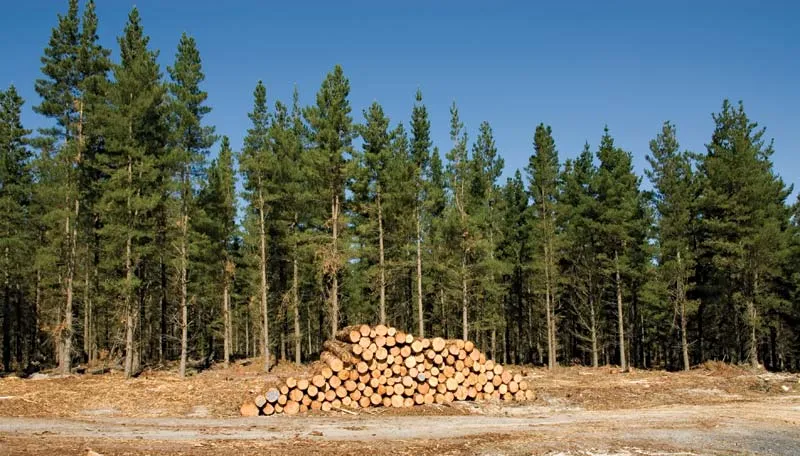
Pine wood comes from pine trees. These trees grow primarily in the Northern Hemisphere and also in the Southern Hemisphere in tropical to temperate climates. The many species of pine trees are due to the various places where pine trees grow.
A species of pine is the Sumatran pine which has crossed the equator to an area called Sumatra, which is 2 degrees South. There are various pine species in North America that grow in regions as far north and also to places far south of the continent.
Pine trees grow in many environments, from semi-desert to rainforest regions. Some grow from sea level to heights of 5,200 meters above sea level. Pine trees also grow in cold areas as well as the hottest parts of the planet. The most common characteristics of these places are good soil and only limited amounts of water.
Many pine species have been relocated to temperate and subtropical areas of the Northern and Southern Hemispheres. Pine is mainly grown to become timber. Some growers cultivate them as ornamental plants and trees in gardens, parks, and reserves. There are also some species of pine that were introduced in new areas that have become invasive and negatively impact natural ecosystems.
What are Pine Tree Characteristics?
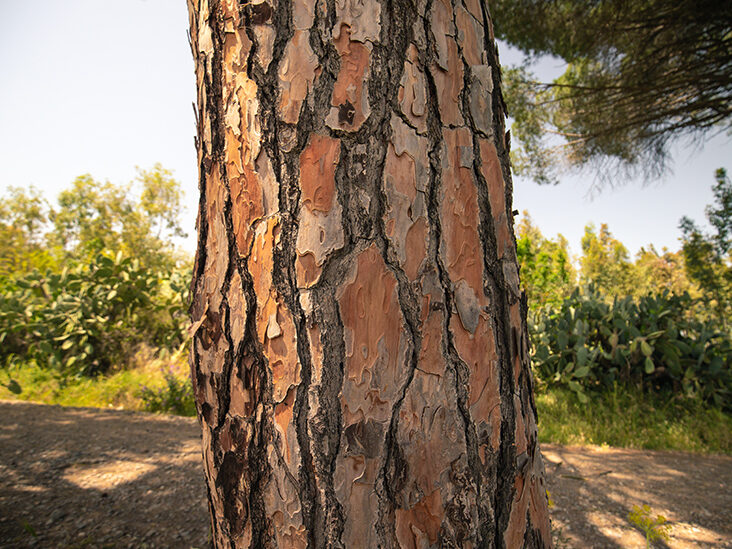
Pine trees are evergreen trees that grow cones. These are resinous trees growing from 3 to 80 meters tall. Most pine tree species grow 50 to 150 feet. The Siberian dwarf pine tree and the Potosi pinyon are the smallest pine species. Meanwhile, the tallest pine trees are the ponderosa pine found in the Rogue River-Siskiyou National Forest in Oregon.
Pine trees live very long, reaching the age of 1,000 years. Some species live longer. The Great Basin bristlecone pine species are the oldest living pine trees or the Pinus longaeva. A pine tree called “Methuselah” is the oldest living organism in the world which could be as old as 4,800 years. This tree is still growing in the California White Mountains.
A pine tree grows distinctly. Its needles, branches, and cone scales are arranged in a Fibonacci sequence. There are new spring shoots called candles which have brown to white scales that turn green. From pointing upwards, these candles tend to spread outward. The presence of candles signifies that the soil is fertile and the trees are growing perfectly.
The pine tree bark is very thick and scaly; however, there are pine tree species with think and very flaky skin. The tree branches grow whorl-like structures with very tight spirals that look like rings from the surface. Most pines grow one whorl every year.
There are four kinds of foliage in a pine tree. The first kinds are the seed leaves or cotyledons, which sprout from the tree whorl. The second type is juvenile leaves which are leaves that grow after the seed leaves are shed. Juvenile leaves are seen in young plants and arranged spirally from the shoot.
Scale leaves look like bud scales. The fourth types are needles or adult leaves. These are photosynthetic leaves that are grouped in clusters.
What are Pine Wood Characteristics?
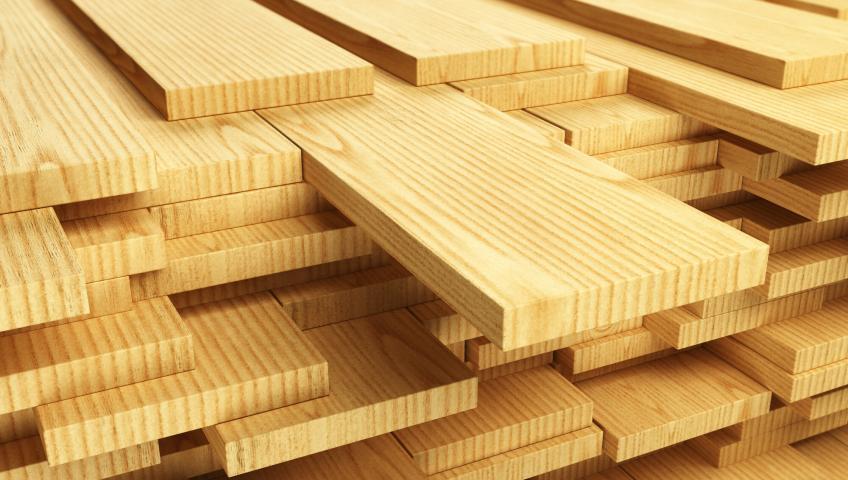
To get to know the different pine wood characteristics, we must learn about the different types of pine wood. Pine is not pine. Other species produce different types of lumber with varying densities and strengths. An example would be the yellow pine Shortleaf pine species as strong as Red Oak.
Soft Pines Characteristics and Examples
Soft pines are low-density wood, lovely even grains, and slow earlywood to latewood transition. These pine species are indistinguishable but are easily differentiated from hard pine species.
There are three major species of soft pines: Sugar Pine, Western White Pine, and Eastern White Pine. The Easter White Pine has a unique texture due to its fine diameter tracheids and resin canals. The species with the coarsest textures is the Sugar Pine, as these come with large resin canals. The Western White Pine has a medium texture. There are a fourth and not so-often used pine species called the Limber Pine.
Hard Pines Characteristics and Examples
Hard pines have opposite characteristics to soft pines, including hardness and wood densities, transitions from early wood to late wood, and also when it comes to the evenness of the wood grain.
Hard pines grow quickly from early wood to late wood with an uneven appearance of the grains. There are two subgroups of hard pines: Southern Yellow Pine and Western Yellow Pines.
Southern Yellow Pine
The Southern Yellow Pine subgroup has the general profile of hard pines. These are dense, from 36 to 42 pounds per cubic feet in average dried weight. These pines have the quickest transitions from early wood to late wood and have very uneven grains.
Southern Yellow Pine species are hard to distinguish from each other. This is true even when you place these woods under the microscope. The Southern Yellow Pine species are the following: Shortleaf Pine, Slash Pine, Longleaf Pine, and Loblolly Pine.
There are also other minor Southern Yellow Pine species. These minor species are not as frequently used for lumber, furniture making, and construction. These species have lower densities, from 32 to 36 pounds per cubic foot. The minor Southern Yellow Pine species are the Sand Pine, Spruce Pine, Table Mountain Paine, Pitch Pine, Virginia Pine, and the Pond Pine. A lesser-grown pine cultivated only in plantations in the Caribbean Pine.
Western Yellow Pine
Western Yellow Pines have the characteristics between soft pines and hard pines. Compared to Southern Yellow Pines, these western varieties don’t have the attributes of hard pines.
Most species classified as Western Yellow Pines have quick early wood to late wood transitions and have lighter weights and even grains. There are two main species of Western Yellow Pines: Lodgepole Pine and Ponderosa Pine.
These subgroups are the same as the characteristics of lumber, which are sold and marketed in lumberyards and hardware stores. Pine used as construction lumber will have the stamp “PP-PL,” which means that these were from Western Yellow Pine.
The two Western Yellow Pine species are also very difficult to distinguish. The Ponderosa Pine has larger resin canals but can only be seen by checking it on a larger pattern. The Ponderosa Pine has wider trunk diameters compared to the Lodgepole Pine. These species have knot-free grains with wider arcs from their growth rings.
Another less common Western Yellow Pine species that are almost similar to the Ponderosa Pine is the Jeffrey Pine. Even experts and lumberyard workers find it hard to distinguish the two, and thus, both are called Ponderosa Pine.
Other Western Yellow Pine species that may not have the same characteristics as other Western pines are the Jack Pine and Radiata Pine. The Jack Pine is endemic further east and grows together with other species of spruce pine and fir trees. This pine is stamped with “SPF.” Jack Pine has dimpling along its flat surface but is not as pronounced as the Lodgepole Pine.
The Radiata Pine grows in the coastal areas of California and is mostly on vast plantations in New Zealand, Australia, and Chile. The Radiata Pine is also the most commonly cultivated in the southern hemisphere. This pine is valued for its quick growth transition and is the most widely used pine for construction wood and paper.
Red Pine
The Red Pine subgroup has one species called the Red Pine or Pinus resinosa and two closely related European species, Austrian Pine and Scots Pine.
Pinyon Pines
The final subgroup of pine trees is the Pinyon Pine. These trees are characterized by quick early wood to late wood transitions, narrow growth rings, and many resin canals. Pinyon Pines are heavier, with small diameters, and come with a distinct smell. Pinyon Pines are not used as lumber. Only one species exist, the Pinyon Pine tree.
The Most Common Pine Species and their Characteristics and Uses
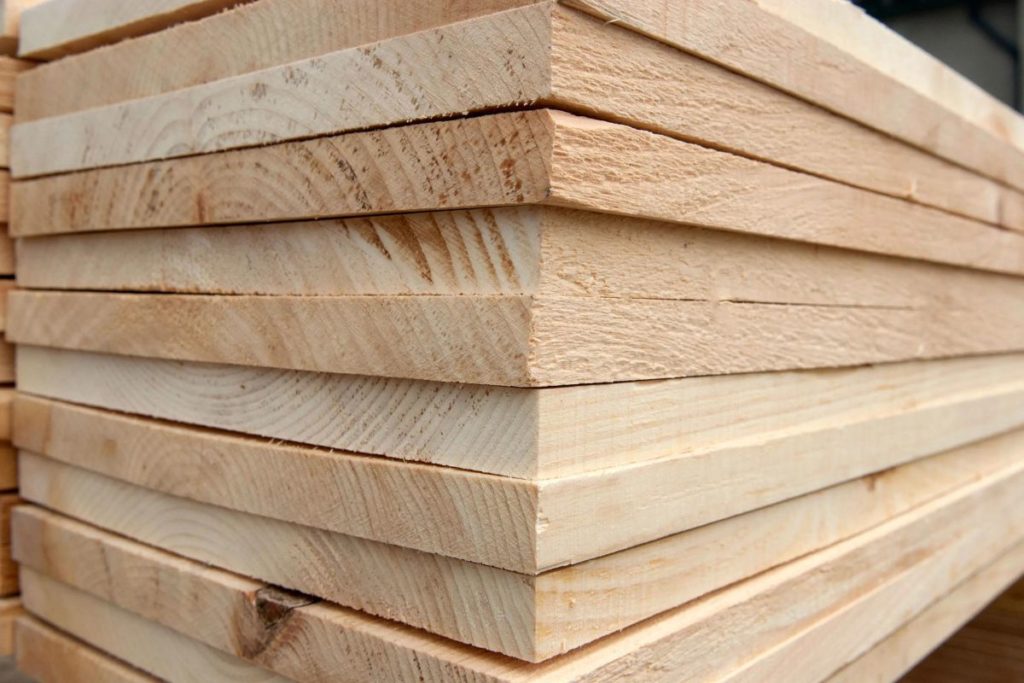
The following are the most common pine tree species. Let’s discuss these pine trees, their characteristics, and their different uses.
Eastern White Pine (Pinus strobus)
The Eastern White Pine is the most common and widely used lumber for construction in the northeast areas of the United States. It is mainly found in Eastern North America and grown on plantations.
- Tree Size: 65 to 100 feet tall and 2 to 4 feet in diameter
- Average Dried Weight: 25 pounds per cubic feet
- Specific Gravity: .34, .40
- Janka Hardness: 300 pounds-feet
- Color and Appearance: this pine species have light-brown hardwood, which may also come with a reddish hue. The sapwood is white to pale yellow. The overall color of the wood tends to darken as it ages.
- Grain and Texture: these species have a straight grain with medium and even texture. The end grain has a large resin canal, with a slow transition from early to latewood.
- Resistance to Rotting: this species has a moderate to low resistance to rotting or decay.
- Workability: this wood is easy to work with whether you’re using power or hand tools. This also accepts glues, paints, and finishes.
- Presence of Odor: you’ll notice a slight resinous smell as you work with this wood.
- Availability: Eastern White Pine is used mainly for construction, and thus, the prices can be moderate for domestic softwood species.
- Uses: Eastern White Pine is valuable as construction lumber, crates, carving, boatbuilding, and boxes.
Longleaf Pine (Pinus rigida)
The Longleaf Pine is very predominant in the northern United States. It is a minor species of the Southern Yellow Pines, which grows as far as northern Georgia State.
- Tree Size: 50 to 65 feet tall and 2 feet wide
- Average Dried Weight: 34 pounds per cubic feet
- Specific Gravity: .47, .55
- Janka Hardness: 620 pounds-feet
- Color and Appearance: Longleaf Pine has a red-brown heartwood and yellow-white sapwood.
- Grain and Texture: this species has straight grains with moderate textures. The end grain has large resin canals and many evenly distributed grains.
- Resistance to Rotting: this pine species have low to moderate resistance to decay
- Workability: This pine species works well with many woodworking tools, but the resin can cause gumming of the tools and can rub on sandpaper. This accepts glues, paints, and finishes very well.
- Presence of Odor: Pitch pine has a distinct smell typical in the Pinus genus.
- Availability: Pitch pine is available domestically with other pine species and marketed as Southern Yellow Pine.
- Uses: Pitch pine is common in heavy construction projects, including the construction of beams, bridges, poles, railroad ties, and many more. This species also makes wood pulp, plywood, and veneers.
Maritime Pine (Pinus pinaster)
Maritime Pine is abundant in plantations worldwide. Outside Europe, the maritime pine has been replaced by Radiata Pine as the latter can provide better quality lumber. This species is also beneficial for its resin as this is used to make turpentine.
- Tree Size: 65 to 115 feet tall and 2 to 4 feet wide in diameter
- Average Dried Weight: 31 pounds per cubic feet
- Specific Gravity: .39, .50
- Janka Hardness: 390 pounds-feet
- Color and Appearance: The heartwood is light red-brown while the sapwood is demarcated with a pale yellow to white color. The color of the lumber darkens as it becomes older.
- Grain and Texture: Maritime pine has a straight grain with even and medium texture.
- Resistance to Rotting: this pine species have a low to moderate resistance to decay
- Workability: This pine species is easy to work with using most tools, but it has resin that can clog up the sandpaper and affect tools. This species accepts glues and finishes very well.
- Presence of Odor: Maritime pine has a resinous smell primarily when it is worked.
- Availability: this wood is available mainly from plantations in Portugal, France, and Spain. Prices are within the normal range.
- Uses: Maritime pine wood is mainly used to make paper, boxes, crates, flooring, and construction wood.
Ponderosa Pine (Pinus ponderosa)
Ponderosa is Yellow Pine but has many characteristics such as white or soft pines. It has a lower density compared to yellow pines that are located in the eastern areas of the United States.
- Tree Size: 100 to 165 feet tall and 2 to 4 feet wide
- Average Dried Weight: 28 pounds per cubic feet
- Specific Gravity: .38, .45
- Janka Hardness: 460 pounds-feet
- Color and Appearance: the ponderosa pine has a reddish-brown heartwood with a yellowish-white sapwood
- Grain and Texture: Ponderosa pine has a straight grain and medium texture. The end grain has many medium to large resin canals; these species have quick early to latewood transitions, while the end grain colors can vary depending on the spaces of the growth rings.
- Resistance to Rotting: this pine species have a low to moderate resistance to decay
- Workability: the Ponderosa pine works with all machines and hand tools. You can use glues and finishes with this pine species well.
- Presence of Odor: the Ponderosa pine has a slight but resinous smell primarily when it’s being worked.
- Availability: this pine species is widely distributed throughout the western parts of North America. It is significant lumber in construction areas in the western parts of the United States. Sometimes Ponderosa pine is mixed with a Lodgepole Pine species and sold as construction wood with a “PP/LP” stamp.
- Uses: Ponderosa pine is for plywood, veneer wood, boxes, posts, poles, crates, subflooring, cabinetry, interior trims, and lumber for construction.
Radiata Pine (Pinus radiata)
The Radiata pine is expected in the southern hemisphere, where most true pines are absent. This is a widely cultivated pine tree in plantations because it grows fast. It is a popular choice in the construction and the paper industry.
- Tree Size: 80 to 100 feet tall and 2 to 3 feet in diameter
- Average Dried Weight: 32 pounds per cubic feet
- Specific Gravity: .41, .51
- Janka Hardness: 710 pounds-feet
- Color and Appearance: the Radiata pine has a light brown heartwood and paler yellow-white sapwood. The lumber has wide growth rings with no knots.
- Grain and Texture: this pine species has straight grains with a medium texture. The end grain has many moderately-large resin-filled canals, slow early to latewood transition, and moderate to low color contrast.
- Resistance to Rotting: this pine species is perishable from rotting and decay.
- Workability: This pine species is easy to work with hand and machine power tools. This species works well with finishes and glues.
- Presence of Odor: there is a slight resinous smell as you work with this wood.
- Availability: Radiata pine is grown in plantations in Chile, New Zealand, and Australia. The price is slightly higher compared to other softwoods and domestic pine species.
- Uses: Radiata pine makes plywood, veneer, boxes, crates, paper, and construction material.
Scots Pine (Pinus sylvestris)
Scots pine is a widely distributed pine species from Portugal to eastern Siberia. Because of this, this pine tree has variable densities, strengths, and wood appearance. Pine trees from winter climates have denser and finer wood because these grow slower.
- Tree Size: 65 to 115 feet tall and 2 to 3 feet wide
- Average Dried Weight: 34 pounds per cubic feet
- Specific Gravity: .39, .55
- Janka Hardness: 540 pounds-feet
- Color and Appearance: Scots pine has a light red-brown heartwood and a pale yellow to white demarcated sapwood.
- Grain and Texture: this pine species have a straight grain with a medium and very even texture.
- Resistance to Rotting: It is not as durable as other pine species when it comes to decay and rot. Scots pine is commonly treated with wood preservatives to improve its lifespan.
- Workability: This pine species is easy to work with power and hand tools. It accepts glues and finishes well.
- Presence of Odor: this pine species has a slight resinous odor primarily when it is worked.
- Availability: the price of Scots pine is moderate as it is common in the construction and paper industry.
- Uses: this pine species are commonly used in posts, crates, boxes, paper, flooring, construction, utility poles, etc.
Sumatran Pine (Pinus merkusii)
The Sumatran Pine is known as the only true pine. It is distributed along the southern hemisphere and grown in plantations for its resin and lumber.
- Tree Size: 100to 130 feet tall, 2 to 3 feet wide
- Average Dried Weight: 44 pounds per cubic feet
- Specific Gravity: .57, .71
- Janka Hardness: 950 pounds-feet
- Color and Appearance: the Sumatran pine has a light red to brown heartwood with a pale yellow to white demarcated sapwood. The color of Sumatran pine lumber will become darker as it ages.
- Grain and Texture: this pine species has a straight grain and even texture.
- Resistance to Rotting: Sumatran pine is non-durable to decay and is also easily affected by insects and termites.
- Workability: This pine species will work well with hand and power tools, but it comes with resin which can clog up your sandpaper and gum up saws and other tools. This wood accepts finishes and glues very well.
- Presence of Odor: like all pine species, Sumatran pine has a slight resinous scent when it is being worked.
- Availability: this pine species is combined with Khasi Pine and is used as a construction wood. It is moderately priced.
- Uses: this pine species is mostly for paper, matchsticks, furniture, construction wood, and flooring.
Final Words
Pine wood is valuable for construction, paper, box and crate-making, and other projects. Pine can withstand stresses depending on the species but may not do well with decay or rotting. Always check the characteristics of the pine species you’re using. Buy your pine wood from trusted dealers and lumberyards to get the best quality wood for your projects.

Leave a Reply